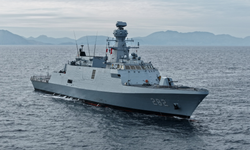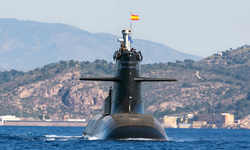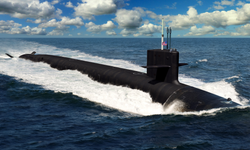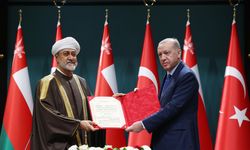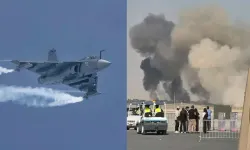 Illustrious, one of the Invincible-class submarines launched by Singapore on Dec 13, 2022. (Photo: CNA/Vanessa Lim)
Illustrious, one of the Invincible-class submarines launched by Singapore on Dec 13, 2022. (Photo: CNA/Vanessa Lim)
Alongside the expansion of its submarine fleet, the RSN will also introduce its first Multi-Role Combat Vessel (MRCV), with a total of six units ordered to replace the aging Victory-class missile corvettes. The first MRCV is expected to be launched later this year. The MRCVs are significantly larger than the corvettes, offering up to three times the operational range. These vessels will act as "motherships" for unmanned platforms, emphasizing the deployment and use of advanced sensors and combat systems to bolster the navy's ability to safeguard Singapore’s maritime interests.
On the air side, the Republic of Singapore Air Force (RSAF) is set to replace its aging fleet of Fokker 50 maritime patrol aircraft, which have been in service for over three decades. Dr. Ng revealed that the RSAF is evaluating Boeing’s P-8A Poseidon and Airbus’ C295 for the role. The decision to replace these aircraft reflects Singapore’s commitment to maintaining robust surveillance capabilities over its vast maritime domain.
Furthermore, the RSAF will acquire eight additional Lockheed Martin F-35A Lightning II fighters, supplementing the initial purchase of twelve F-35Bs. This move is part of the RSAF’s ongoing efforts to modernize its fleet and ensure superior air superiority capabilities. Additionally, the RSAF has established fighter training detachments for F-35 and F-16 pilots at Ebbing Air National Guard Base in the United States.
On the ground, the Singapore Army will acquire the Titan, a new infantry fighting vehicle (IFV) featuring a 30mm remote-controlled weapons station (RCWS) and advanced counter-unmanned aerial system (UAS) solutions. This new IFV will enhance the army’s capabilities in modern warfare scenarios, particularly in urban and asymmetric combat environments. The Army's M142 High Mobility Artillery Rocket System (HIMARS), in service since 2010, will also be upgraded to launch more potent rockets, reflecting its effectiveness demonstrated during the Russia-Ukraine conflict.
The Ministry of Defence’s (MINDEF) expenditure for 2025 is projected at S$23.4 billion (approximately US$17.3 billion), marking a 12.4% increase from the previous year. Dr. Ng explained that this increase is necessary to compensate for projects delayed due to the COVID-19 pandemic and global supply chain disruptions. While 2025 is expected to be the final "catch-up" year, the minister noted that smaller increases in defense spending are anticipated in the coming years, unless unforeseen geopolitical or economic challenges arise.
With these strategSic investments in its naval, air, and land forces, Singapore aims to bolster its defense posture, ensuring its military remains capable of meeting evolving regional and global security challenges. These initiatives are in line with the Singapore Armed Forces (SAF) 2040 blueprint, which outlines long-term plans for modernization and operational readiness.




